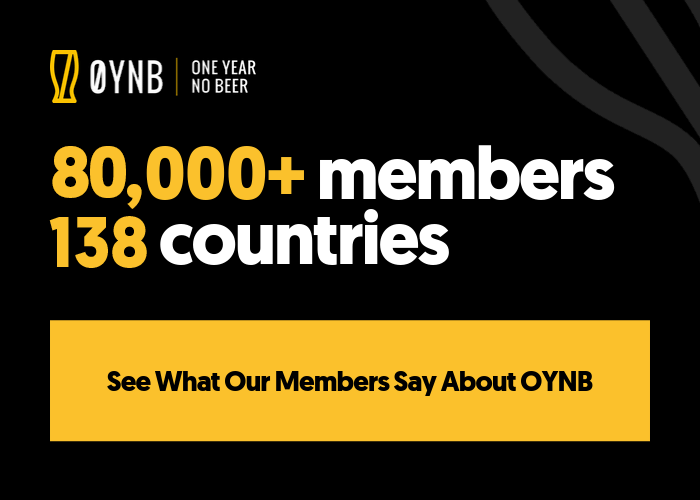Wellness programmes are more popular than ever
Originally started as employee perks for large corporations, employee wellbeing programmes are becoming common in small and medium sized businesses too. Wellness programmes are now often expected by employees to be a part of a company’s benefits packages, with a survey by Virgin Pulse finding that 87% of employees said they consider health and well-being offerings when choosing an employer.
Wellbeing programmes give employees incentives, tools, social support, and strategies to adopt and maintain healthy behaviour. Staff are able to improve or maintain their mental and physical health, and quality of life, while employers benefit from reduced absenteeism and increased retention. A good corporate wellness programme benefits both employee and employer.
3 easy wellness ideas to implement in your workplace:
- Introduce a weekly mindfulness class
- Offer support and encouragement to take a break from alcohol
- Implement strategies to reduce the time staff spend sitting down
Wellbeing programmes improve employee’s health

In 2013 researchers completed a study named the Rand Report, one of the most comprehensive and thorough reviews of wellness programmes. The Lead Author, Soeren Mattke, found that “workplace wellbeing programmes can help contain the current epidemic of lifestyle-related diseases, the main driver of premature morbidity and mortality.”
Happy, healthy staff improve business productivity and output
Low employee productivity is defined as physically being at work but not working. This type of poor productivity is often referred to as presenteeism. It is estimated that the cost associated with presenteeism due to poor employee health is at least 2 to 3 times greater than employee absence. Add to this, research from the Institute of Alcohol Studies (IAS) found that as many as 89,000 people may be turning up to work hungover or under the influence of alcohol every day, costing the economy up to £1.4 billion a year.

As mentioned above, two of the main causes of presenteeism are poor health and hangovers. Recent research by The Journal of Population Health Management revealed more compelling evidence between the link of health behaviours and presenteeism. It found that smokers were 28% more likely to have high presenteeism than non-smokers. Employees with a poor diet were 66% more likely to have high presenteeism than those who regularly ate whole grains, fruits, and vegetables. Employees who didn’t exercise often were 50% more likely to have high presenteeism than employees who regularly exercised. These findings show that poor health behaviours are strongly associated with high levels of presenteeism; unhealthy individual lifestyle choices may result in substantially higher levels of lost productive work time.
3 employee wellness programme ideas to transform your workplace
The foundation of a good employee wellbeing programme is a focus on behaviour change. With the right education, skills, motivation, employer and social support, people change behaviours. Businesses can help their staff adopt and maintain healthy behaviours through their corporate wellness programme. Healthy behaviours lead to lower health risks, and lower health risks lead to less chronic disease. With less chronic disease employees have less illness related absences.
Introduce a weekly mindfulness class

Studies have shown that mindfulness is linked to and has the capacity to improve skills including regulating attention and behaviour. Attention is a fundamental skill, yet studies suggest people spend nearly 50% of their waking hours thinking about something other than what they're doing. The proliferation of smartphones and social media in recent years have created additional distraction issues, with nearly 3 out of 4 workers admitting they feel distracted when they are at work.
However, attention levels can be improved. Research by Zeidan found that short mindfulness training can help to stabilise attention, and increase attention spans. With regular practice, meditation can improve the ability to disengage from mind wandering. Introducing a regular mindfulness session can improve your employees ability to cope with inner and outer distractions in the workplace, and improve their overall wellbeing.
Support and encourage employees to take a break from alcohol
Statistics show that employed people are more likely to drink to excess than unemployed people, that the proportion of young workers drinking excessively is highest in professional and financial services (where about a third of staff admit heavy drinking). One study calculated lost productivity due to alcohol in the UK at about £7.3bn per year; the effect of alcohol in the workplace has harmful implications on the health and social behaviour of employees and employers.
Despite the high cost of alcohol-related harm to businesses, and loss of productivity due to presenteeism, some businesses continue to foster a drinking company culture. Your business may have a drinking culture if you take new starters out for drinks, or use a boozy Christmas party as motivation for your staff.
Taking a break from alcohol has many proven benefits including; improved sleep and productivity, reduced anxiety, and improved overall health. Encouraging and supporting your employees to take a break from alcohol can help improve their wellbeing, and in turn improve their performance at work. Embarking on a break from drinking requires a different way of thinking for many people and a behavioural change. Adding a habit changing programme like One Year No Beer to your employee wellness programme can help to provide your team with the support they need to sustain an alcohol-free period whilst gaining maximum benefit from their break.
Implement strategies to help employees sit less

There are many strategies you could implement to encourage your employees to move more including; Encourage stairwell use by providing posters for display in strategic locations, set up a step challenge and offer a weekly or monthly prize for the winner, ask your team to eat lunch away from their computers or try installing standing desks.
Forward thinking employers could also provide their staff with training on the process of holding walking meetings. Whilst the idea of hosting meetings whilst walking may seem funny to some people, with corporate meetings being infamous for being held sitting down in offices or board rooms for long periods of time, new studies have shown that taking walks while conducting business meetings can actually increase the creative thought process of all parties involved. Talking whilst walking can improve creative output by 60%.
Implement change now to transform your workplace
Having healthy employees reduces absenteeism, and creates more motivated and happier people who perform better at work. Most importantly, a great employee wellness programme shows that your business prioritises care for your team and their wellbeing.
We can all do our part to help encourage a healthier workforce, and create more supportive workplaces. Increasing movement, adding a focus on mindfulness and supporting employees to take a break from alcohol can make a huge difference to how they perform at work.
If you’re interested in finding out more about OYNB and our corporate programmes for alcohol-free challenges, get in touch at [email protected].

An entrepreneur and former senior oil broker, Ruari gave up drinking after excessive consumption almost cost him his marriage, and worse, his life. Going alcohol-free improved his relationships, career and energy levels, leading to him founding OYNB to provide a support network for others.








